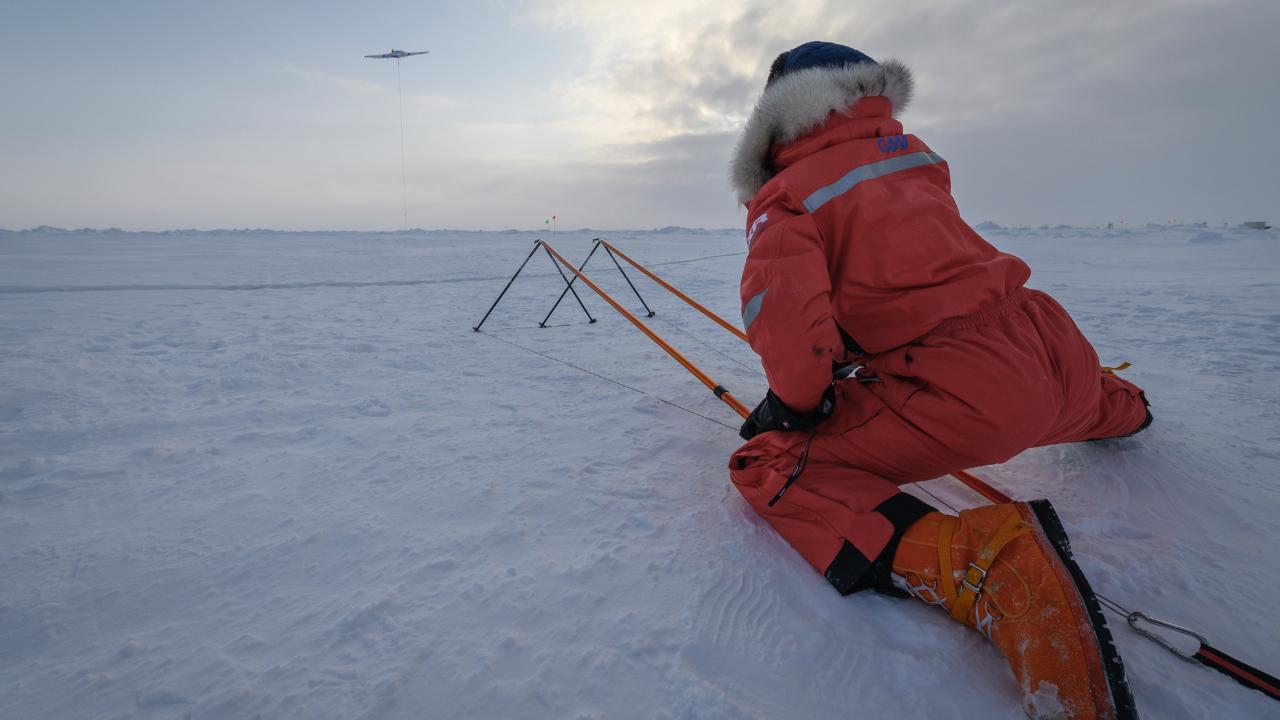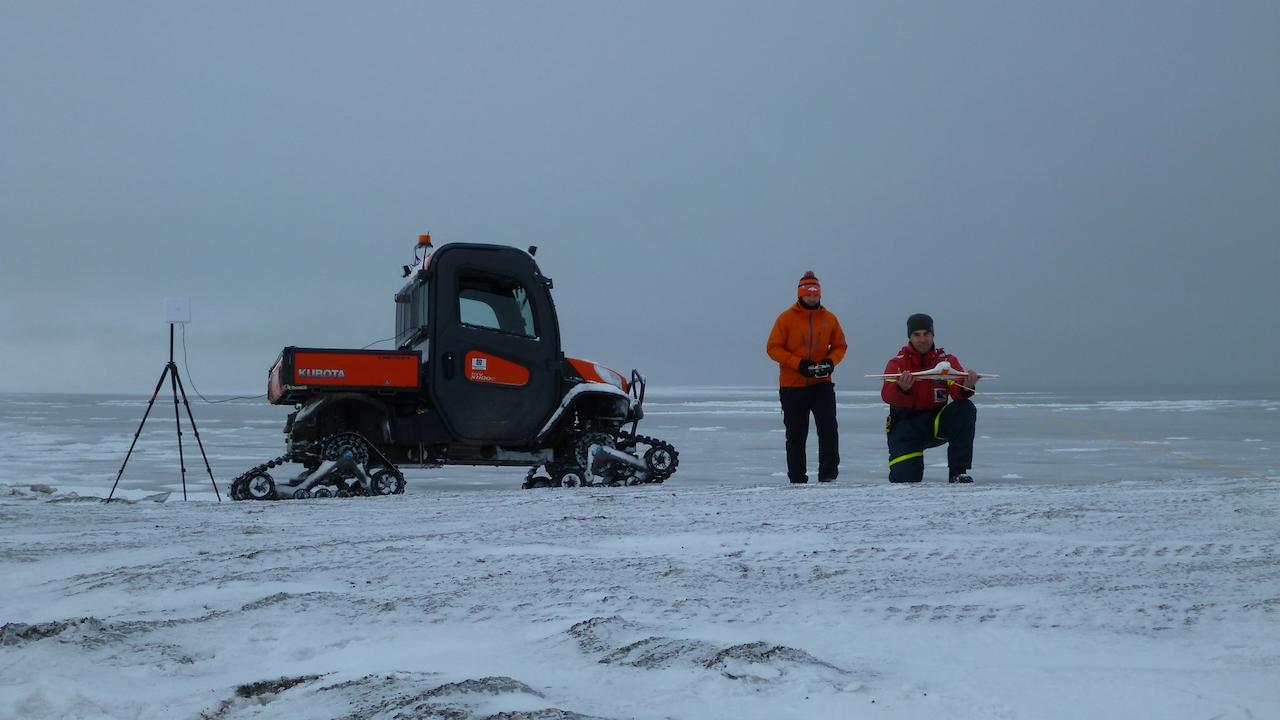Gijs de Boer
Senior Research Scientist
- Ph.D., Atmospheric Science, University of Wisconsin - Madison, 2009
- M.S., Atmospheric Science, University of Wisconsin - Madison, 2004
- B.S., Atmospheric Science, Cornell University, 2002
- Certificate of Specialization in Leadership and Management, Harvard Business School Online, 2023
- Certificate in Strategy Execution, Harvard Business School Online, 2023
- Certificate in Organizational Leadership, Harvard Business School Online, 2023
- Certificate in Power and Influence for Positive Impact, Harvard Business School Online, 2023
Research Interests
Dr. de Boer has undertaken work to improve understanding of the Earth system, specifically including key processes related to the Earth’s atmosphere and surface, the interactions between them, and the impact of such interactions on planetary weather and climate. This has included deployment of various observing systems, including development and deployment of autonomous observing platforms, in connection with field campaigns spanning the globe, from the tropics to the Arctic Ocean. These campaigns have included land-, ship-, and airborne deployment of remote- and in-situ sensors and have been sponsored by various agencies, including NSF, NOAA, DOE, ONR, and NASA. It also includes supporting the development and management of a robust program to deploy uncrewed aircraft systems (UAS) for Earth System research at the University of Colorado Boulder. These efforts have resulted in over 80 publications in peer-reviewed journals, including numerous data papers that describe datasets collected, and the publication of over 20 community-accesible data sets. In addition, Dr. de Boer has served in a variety of leadership roles supporting the broader scientific community to enhance collaborative research outcomes, spanning national and international scientific coordination bodies. Finally, Dr. de Boer has taken on administrative roles supporting the University of Colorado Boulder, helping to develop strategic partnerships, advance principles of diversity, equity, and inclusion, and implement strategic visions.
Current Research
Current efforts focus on understanding the physics of the lower atmosphere, the Earth's surface, and the interactions between them. As of fall 2023, active projects include:
- The Study of Precipitation, the Lower Atmosphere, and Surface for Hydrometeorology (SPLASH): SPLASH probes the drivers of water availability in the East River Watershed of Colorado, including the analysis of measurements and model projections of precipitation, lower atmospheric state, surface energy exchange, and surface properties. This watershed is a critical headwater region in the Upper Colorado River basin and enhancing our understanding of these key processes will help forecasters and water managers better support decisions related to water policy development. This work is sponsored by the National Oceanic and Atmospheric Administration (NOAA) and the US Department of Energy (DOE), and is carried out in collaboration with interagency teams around the country.
- The Multidisciplinary drifting Observatory for the Study of Arctic Climate (MOSAiC) Expedition: The MOSAiC Expedition was an epic journey into the central Arctic Ocean, where the expedition team froze the icebreaker Polarstern into the Arctic pack ice for a year during the COVID-19 pandemic. Our team contributed to the planning and development of the experiment and worked to deploy a fleet of small uncrewed aircraft systems (UAS) to the central Arctic to map temporal and spatial gradients in atmospheric and surface properties. Together with the huge amount of other datasets colleceted during MOSAiC, these UAS-based observations capture new details on surface albedo, boundary layer development, surface energy exchange, and cloud forcing in this remote environment. Sponsored by the US National Science Foundation (NSF), this work brings together a large international team of researchers to better understand the changing Arctic climate system.
- The Tracking Aerosol Convection Interactions Experiment (TRACER): The TRACER project deployed a variety of observing systems to the greater Houston area to help improve our understanding of the interplay between the urban environment, aerosol particles, and coastal circulations on the development of convection and precipitation. With much of the world's population focused in coastal areas, weather in these regimes is extremely impactful. In southeastern Texas, the Houston urban metroplex, significant sources of pollution and particulate matter, and coastal sea breezes come together to force the development of extreme precipitation events. As part of TRACER, our team deployed the RAAVEN UAS to make detailed measurements of the lower atmosphere to help piece together the dynamics and aerosol populations driving such events. Sponsored by the US Department of Energy (DOE), this work includes teams from around the US, including at several national laboratories.
- The Near Coastal Hurricane Impacts (NHCI) Project: Hurricanes and other coastal storms significantly impact coastal environments through flooding, inundation and erosion. The National Ocean Partnership Program (NOPP) Near Coastal Hurricane Impacts (NHCI) project aims to improve our ability to predict and prepare for the impacts of coastal hurricanes. Led by the University of Washington Applied Physics Laboratory, our team contributes to the development and deployment of innovative buoys to measure the properties of waves, and supports analysis of airborne remote-sensing data. Through these actions we help to advance understanding of waves and wind in hurricane environments. Sponsored by the Office of Naval Research (ONR) and NOAA, the project brings together 10 teams spanning observations and numerical prediction from across the US and Europe.
- The Targeted Observation by Radars and UAS of Supercells (TORUS) Project: TORUS seeks to tackle questions related to some of the most violent and destructive storms on Earth. Through the deployment of observing assets, the TORUS team has provided revolutionary perspectives on the environment around supercell thunderstorms to advance our fundamental understanding of the dynamics supporting their development and decay. Our team at the University of Colorado has worked to develop, advance, and deploy UAS around these supercells to gain insight into localized circulations that may support the development of tornadoes with certain storms. Deploying around the midwestern United States, this team has operated these aircraft in a variety of environments providing detailed in-situ measurements of these dangerous areas for aviation. Led by the University of Nebraska Lincoln, TORUS is supported by the US National Science Foundation (NSF).
Research Categories
Atmosphere, Climate and Weather, Cryosphere, Oceans, Water ResourcesResearch Images
Honors and Awards
to
Invalid date -Sponsors
-
Invalid dateP.I.(s)
About CECA
CECA connects and creates a supportive environment for graduate students and postdocs who come from various academic units to do research in CIRES.




